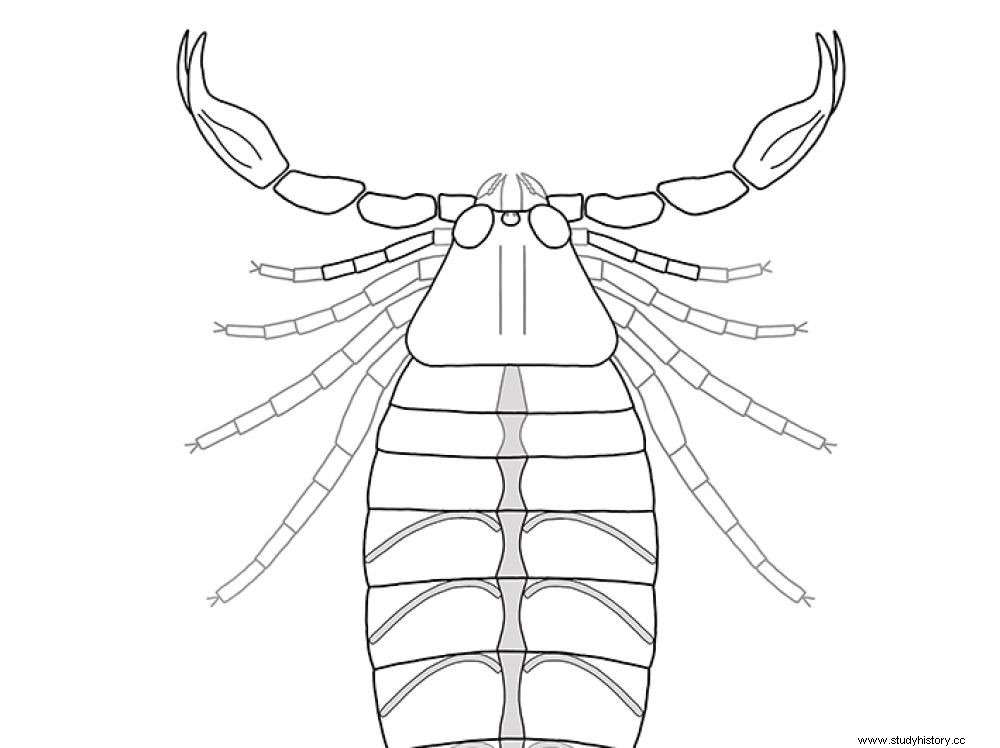It lived 437 million years ago:it is the oldest scorpion fossil. However, the animal appears strangely modern.

Drawing of a Parioscorpio venator reconstructed from two fossils discovered in the United States.
A new species of prehistoric scorpion dating to the early Silurian, around 437.5 to 436.5 million years ago, is described in a study published in the journal Scientific Reports . Dubbed Parioscorpio venator , it is probably the oldest scorpion known to date.
Two specimens of the prehistoric scorpion found
Scorpion fossils are relatively rare, especially those dating from the distant era of the Silurian. However, these animals are important for understanding the transition from marine life to terrestrial life:they are among the first to have ventured on Earth. But when and how did the adaptations necessary for this crossing occur? The answer is still not entirely clear...
A new species of fossilized scorpion dating to the early Silurian, around 437.5 to 436.5 million years ago, is described in a study published in the journal Scientific Reports . Dubbed Parioscorpio venator , it is probably the oldest scorpion known to date.
Two specimens of the scorpion found
Scorpion fossils are relatively rare, especially those dating from the distant era of the Silurian. Yet these animals are important for understanding the transition from marine life to terrestrial life:they are among the first to have ventured on Earth. But when and how did the adaptations necessary for this crossing occur? The answer is still not entirely clear...
The study of Parioscorpio venator might provide some answers. It is known from two specimens discovered in Wisconsin, USA. Both fossils are well preserved and some of their internal structures have even been preserved. Andrew Wendruff of Otterbein University analyzed the fossils and identified traces of the circulatory, respiratory and digestive systems.
P. venator also presents like its distant descendants a tail that ends in a stinger. On the other hand, it has some primitive characteristics present in other early marine organisms, such as large compound eyes.

One of the specimens with its reconstruction from scanner images. Credit:Andrew Wendruff/Science Reports
A horseshoe crab scorpion
The internal structures of these two ancestral scorpions are eerily similar to those of modern scorpions and horseshoe crabs. “That means two things. First, it is certain that these scorpions were able to breathe air and therefore could walk on dry land ” explains Andrew Wendruff. But doubt remains about their ability to live entirely on Earth:researchers have not managed to fully identify their respiratory system. It is therefore impossible to know if they were also able to evolve in water.
“Thanks to these scorpions we can also say that the transition from a purely marine way of life, which involves breathing with gills, to the ability to breathe air dates before this fossil which is about 437 million years old ” specifies the scientist.
